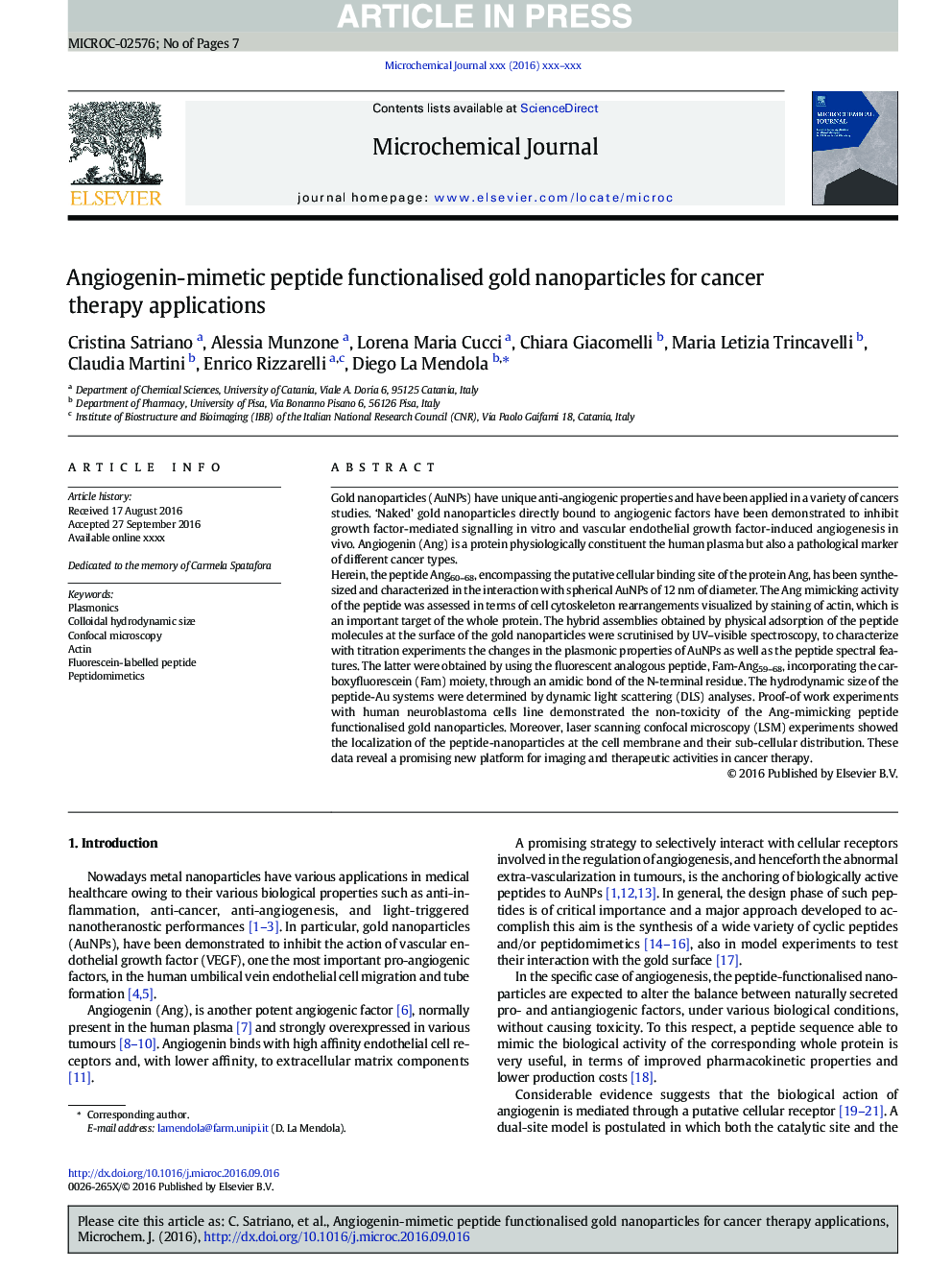| Article ID | Journal | Published Year | Pages | File Type |
|---|---|---|---|---|
| 5138963 | Microchemical Journal | 2018 | 7 Pages |
Abstract
Herein, the peptide Ang60-68, encompassing the putative cellular binding site of the protein Ang, has been synthesized and characterized in the interaction with spherical AuNPs of 12Â nm of diameter. The Ang mimicking activity of the peptide was assessed in terms of cell cytoskeleton rearrangements visualized by staining of actin, which is an important target of the whole protein. The hybrid assemblies obtained by physical adsorption of the peptide molecules at the surface of the gold nanoparticles were scrutinised by UV-visible spectroscopy, to characterize with titration experiments the changes in the plasmonic properties of AuNPs as well as the peptide spectral features. The latter were obtained by using the fluorescent analogous peptide, Fam-Ang59-68, incorporating the carboxyfluorescein (Fam) moiety, through an amidic bond of the N-terminal residue. The hydrodynamic size of the peptide-Au systems were determined by dynamic light scattering (DLS) analyses. Proof-of work experiments with human neuroblastoma cells line demonstrated the non-toxicity of the Ang-mimicking peptide functionalised gold nanoparticles. Moreover, laser scanning confocal microscopy (LSM) experiments showed the localization of the peptide-nanoparticles at the cell membrane and their sub-cellular distribution. These data reveal a promising new platform for imaging and therapeutic activities in cancer therapy.
Related Topics
Physical Sciences and Engineering
Chemistry
Analytical Chemistry
Authors
Cristina Satriano, Alessia Munzone, Lorena Maria Cucci, Chiara Giacomelli, Maria Letizia Trincavelli, Claudia Martini, Enrico Rizzarelli, Diego La Mendola,
